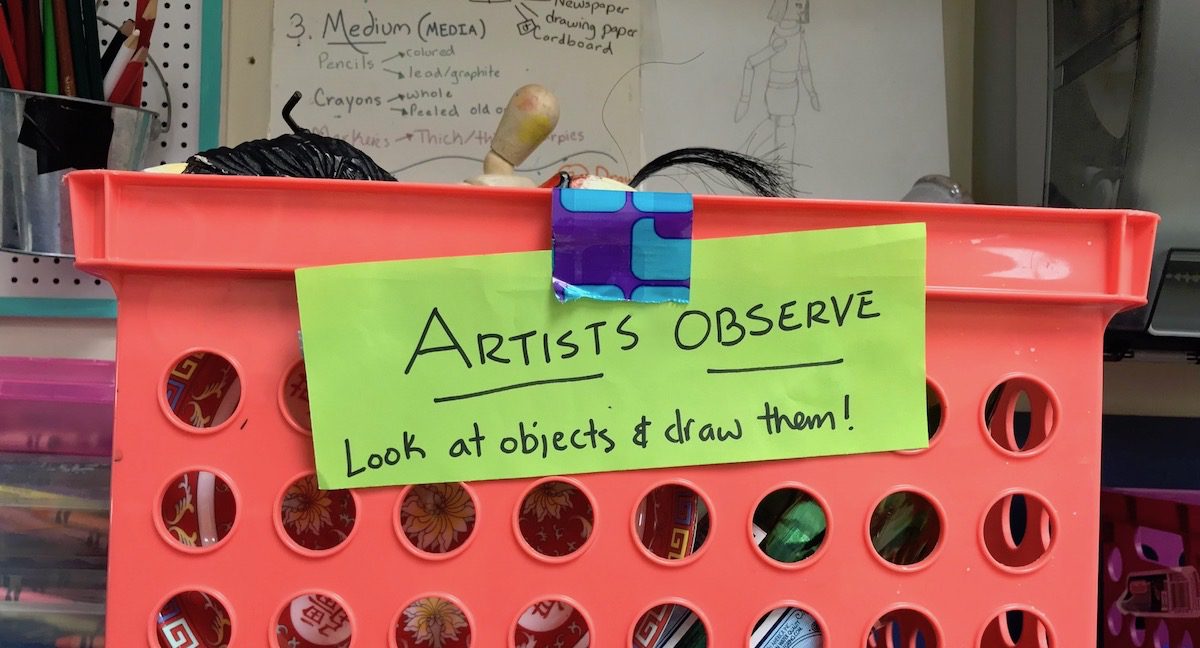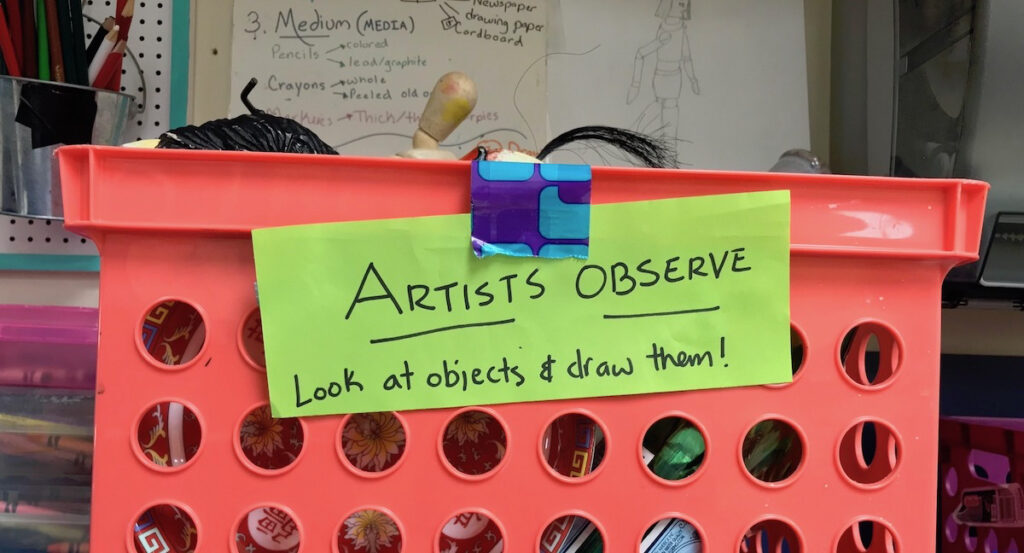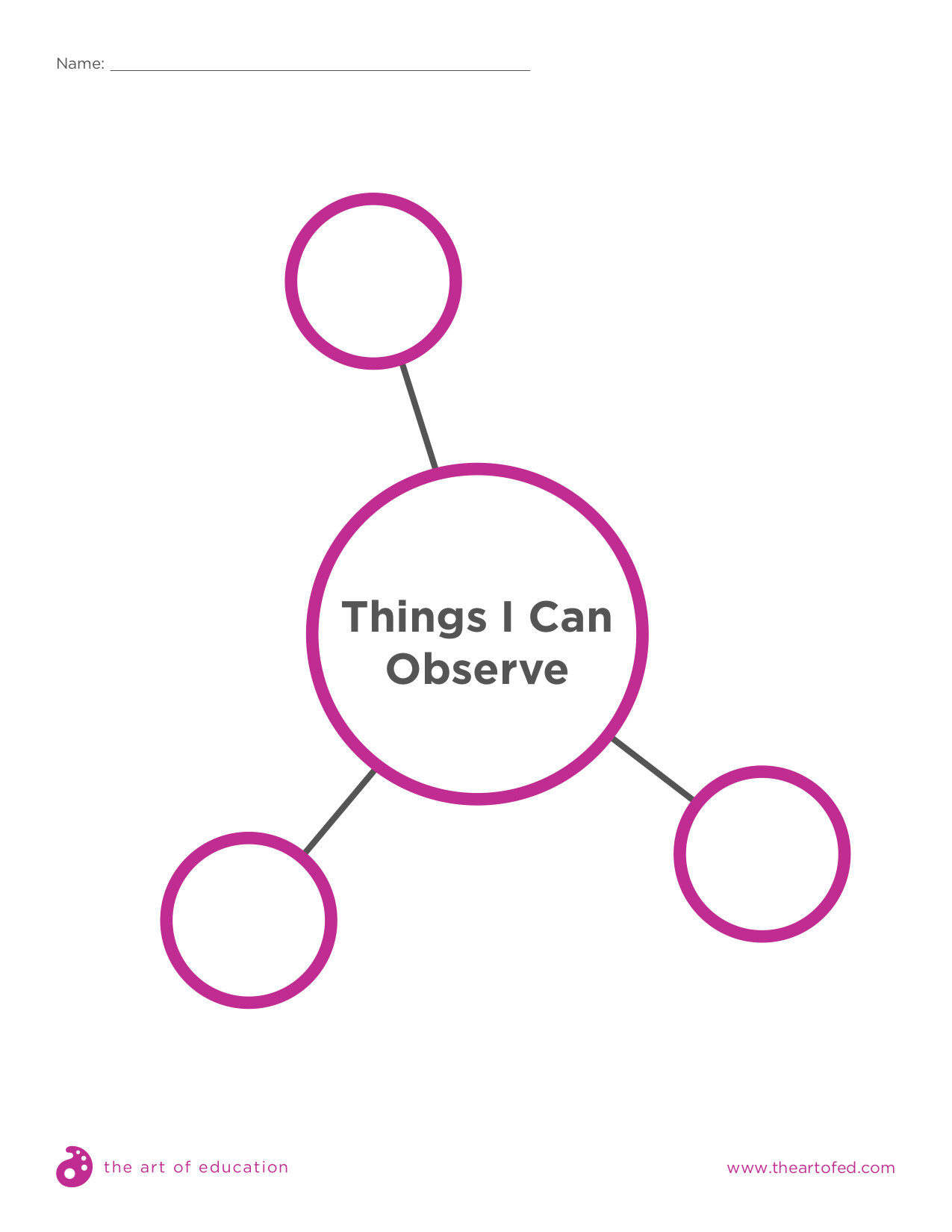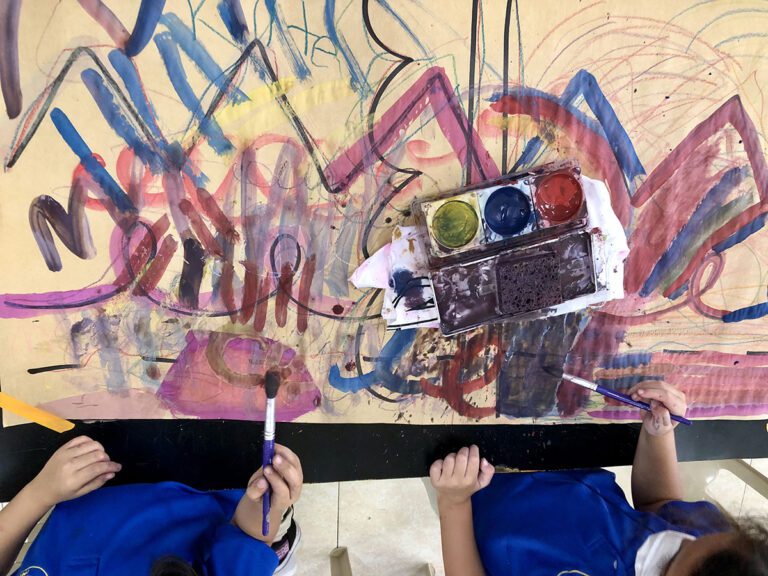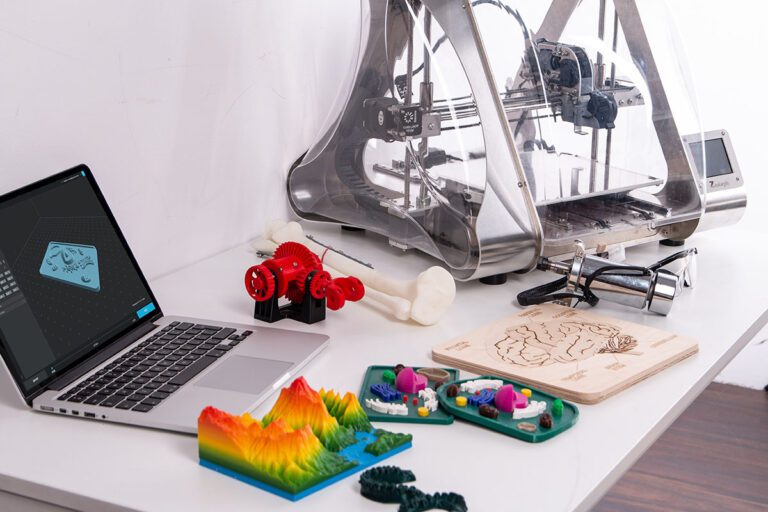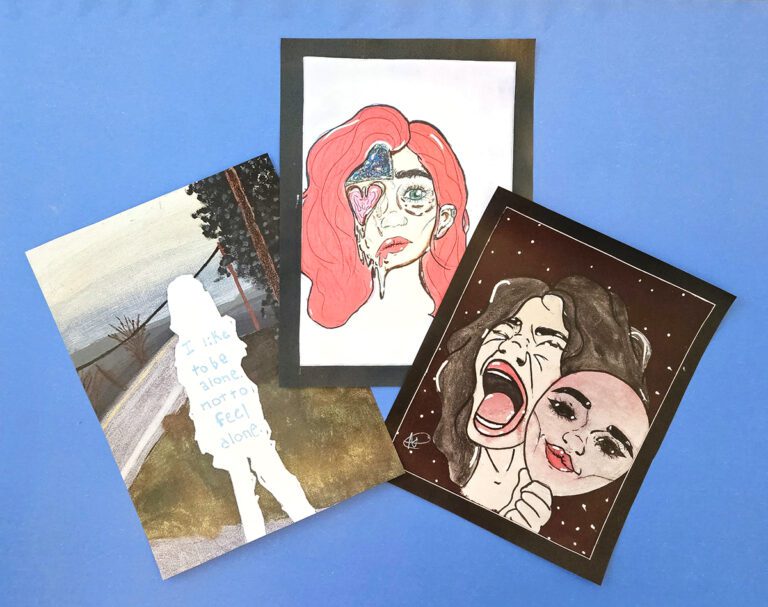Artists have a variety of habits that help them grow and improve their craft, which is why I love to use the Studio Habits of Mind in the art room. Helping students become intentional about their practice is important. Even better, these skills easily transfer across disciplines.
The creators of the Studio Habits of Mind, Lois Hetland, Ellen Winner, Kimberly Sheridan, and Shirley Veenema, emphasized the importance of regarding students as artists that are capable of creating authentic work. In the article, “Why Do We Need the Studio Habit Framework, anyway?,” Lois Hetland said, “The more you can understand what you’re doing and asking the students to do, the more you can refine and focus your intentions, your alignment of the projects and challenges you create with those intentions and the way you check your students’ developing understanding so that you can adjust your own teaching to meet your students’ unique individual pursuits and needs.”
In short, reflective teaching allows you to better meet student needs.
Keeping this idea in mind, have you ever thought about using the studio habits as a big idea in your art room?
Today, I’d like to use the Studio Habit, “Observe,” as an example of what this might look like. Using “Observe” as a big idea is a great way to help your students learn to see like artists, right down to the minute details.
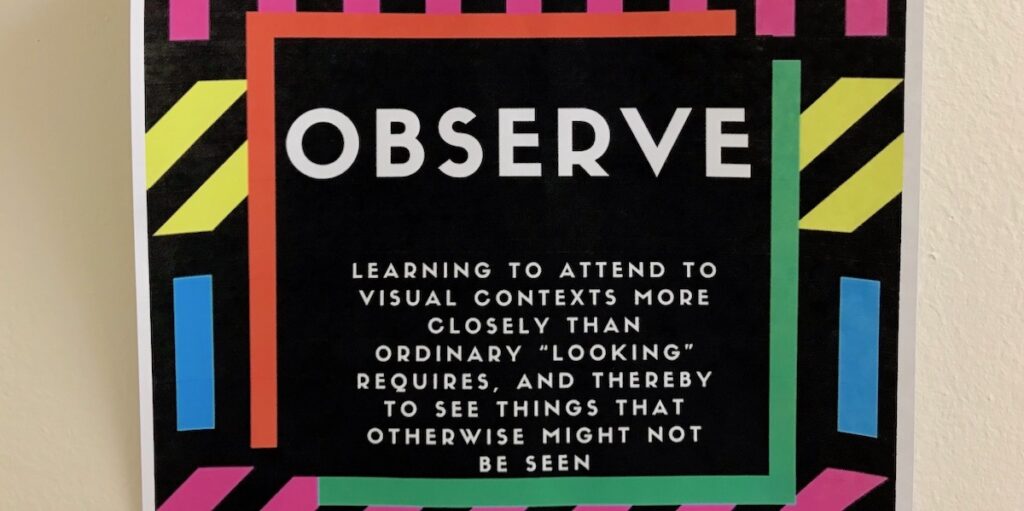
Here are 4 steps to empower your students with an authentic learning activity using the Studio Habit, “Observe!”
1. Introduce the idea of observation.
The first step in getting students to think about this idea is to talk about what it actually means to observe something. The SHoM definition is a great place to start:
“Learning to attend to visual contexts more closely than ordinary ‘looking’ requires, and thereby to see things that otherwise might not be seen.”
You know your students best, so be sure to break it down in a way they can comprehend the vocabulary. Having students observe both art prints and objects is a great way to share this idea.
If you’re looking for specific guided looking activities, check out these articles:
- Slow Looking and 5 Other Simple Activities to Enhance Your Students’ Ability to Analyze Art
- Strengthen Your Students’ Critical Thinking Skills by Playing Art Detective
- 2 Engaging Activities to Develop Your Students’ Visual Literacy
2. Discuss how observation relates to being an artist.
Asking open-ended, challenging essential questions is a great way to help students develop context behind what they will be doing in class.
You’ll want to discuss what kinds of things artists observe and how those things inform their artwork. It is the perfect way to get your students talking and thinking critically. Students can discuss in groups, partners, or as a class.
Be sure to talk about how artists observe in a variety of ways. Make sure to emphasize that observing is not limited to things such as a still life or looking at an object.
Here are a few other things that artists observe:
- Communities
- Environments
- People
- Objects
- Nature
- Themselves
3. Create authentic artwork.
After students have a good understanding of what it means to observe something, it’s time to find things to observe and to create some artwork! Of course, it’s important for students to connect with their subject matter.
Here are 4 ways to help students find meaningful subjects to draw:
- Start with a brainstorming session.
Set your students out on a mission to observe and begin creating by having them brainstorm for just a couple of minutes to get their ideas going. Check out the mind map download at the end of this list! - Provide a variety of still life materials and a digital camera.
In my art studio, I have a container full of objects labeled, “Artists Observe.” Students know they can take out the items and design their own still life to draw from life. Or, they can photograph their setup to use as a reference as well. Students can also use the camera to take photos of people or moments to use as references. This way, they can observe personal and meaningful subject matter when they create using media such as drawing tools, paint or collage.

- Have students bring objects or photos from home.
If you plan ahead, you can have students bring in a small, meaningful object from home or a photograph of something from home. - Have students observe outside of class and come prepared with a sketch.
Students could even make a series of quick sketches at home to use as a reference or to enhance during class time. Encourage students to envision their reference in detail before they start drawing in class.
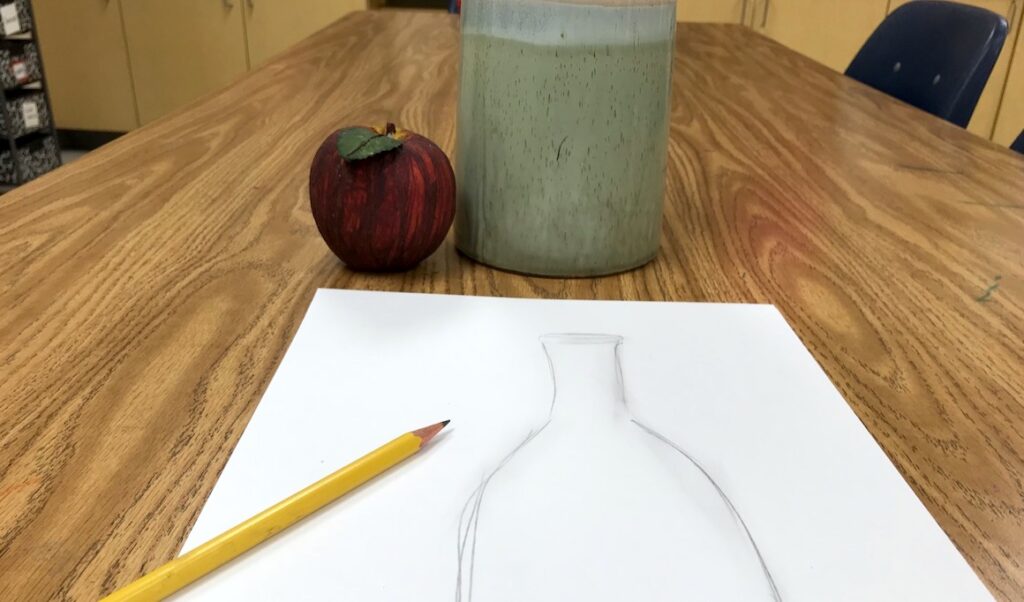
Allow your students to use a variety of drawing tools to create the art they are observing. This way they have more artistic freedom and choice which promotes engagement.
5. Reflect
Reflecting is a valuable learning experience for all artists. Be sure to end this activity with a reflection. It is important to check for understanding and ask questions during the activity.
Check out the 3 reflection ideas below!
- Art Share – Have a few students share with the class and let them take questions.
- Exit Ticket – Give each student a sticky note and have them share what they learned or pose a question for them to respond to and place it in a designated space in our outside of your class.
- Art Walk – Have students walk around the room to view their classmates’ artwork. Once they’re done, ask them to share the similarities and differences they noticed about the observation art.
If you want to learn more about the Studio Habits of Mind check out the book, Studio Thinking: The Real Benefits of Visual Arts Education. The second edition, Studio Thinking 2: The Real Benefits of Visual Arts Education came out in 2013 and is the most recent book published from the creators of the Studio Habits of Mind.
Do you use the Studio Habits of Mind in your classroom, if so how do you use them?
What is your favorite way to teach students how to observe?
Magazine articles and podcasts are opinions of professional education contributors and do not necessarily represent the position of the Art of Education University (AOEU) or its academic offerings. Contributors use terms in the way they are most often talked about in the scope of their educational experiences.
